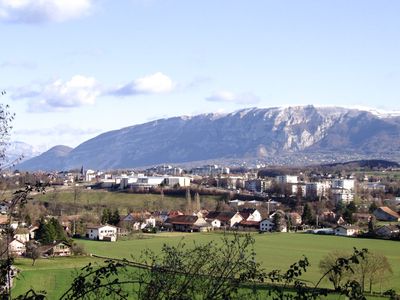Plaine de L’Aire, St. Julien: Cross-border CountrysideSara Graf, Francesco Lupia, and Urban Steiner
As part of the metropolitan region of Geneva, the cross-border territory of the Plaine de l’Aire-Saint Julien is highly urbanized but still hosts a huge variety of agricultural lands, from extensive greenhouses to large-scale crop production (maraîchage). Less then 10 kilometres away from the city center, the undulating landscape around the French border town of Saint Julien is shaped by the Aire river and its many side arms. As a directly connected zone of expansion of the city, the area saw extensive population growth during the last decades and in the context of Geneva’s dwelling crisis, it is considered one of its main battlefield. Today, more than 40 % of Saint Julien’s inhabitants commute to Geneva for work and a new cross-border tram connection to the city center is in planning. Inversely, on the French side, large-scale leisure enterprises (including a large scale disco, a water theme park and a casino) developed and attracted equally Swiss as well as French customers.
Although heavily influenced by the commuting behavior of its residents, territories around Saint Julien, both on the French and the Swiss side of the border are mainly dominated by agriculture. In spite of this common characteristic—the huge increase of population next to highly productive agricultural land—, the Plaine de l’Aire has been shaped by very uneven development. On the Swiss side, the agricultural land has been protected as necessary nourishment reserve. Since 1972 the federal law on the protection of crop rotation required the canton of Geneva to protect agricultural land and secure food supplies. Thanks to this measure, Geneva developed a dense urban center with a wide agricultural green belt.
On the French side, agricultural land remains unprotected and is rather considered as building reserves. But also the land around Saint Julien received considerable attention through the introduction of a free trade zone, mainly serving for the exchange of agricultural products. Hundreds of farmers export their production to Geneva without paying taxes and even Swiss farmers own and cultivate more than 1000 hectares of land on the French side. Totally, around 70 % of the agricultural production of the free zone is imported to Geneva.
